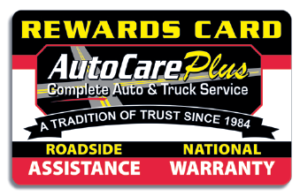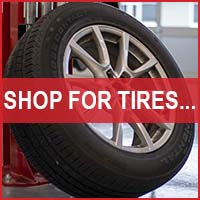ME State Inspection
Safety Inspection
Whether you are new to the state or a seasoned veteran, this page will help you to understand the laws about State Safety and Emissions Testing required for your vehicle.
When do I need to get my vehicle inspected?
Passenger vehicles are registered annually on a staggered basis. Generally, registrations expire one year from the month issued. In most cases, payment of municipal excise tax is a prerequisite to registration. For more information click here.
Inspection Information Which Vehicles Are Affected
All Maine vehicles still require an annual safety inspection. In Cumberland County, in addition to the normal safety checks, 1996 and newer model year light-duty gasoline-fueled passenger vehicles (8500 lbs GVWR and less) and 1997 and newer model year light-duty diesel passenger vehicles (8500 lbs GVWR and less) must have an OBD test as part of the inspection process. In order to perform this test, those cars are connected to a diagnostic scanner via the standardized OBD port. The diagnostic scanner communicates with the vehicle’s OBD system to determine whether or not the monitors are working properly and if they are detecting any problems.
Where To Get Your Vehicle Inspected
All vehicles must be inspected by an official Maine Inspection Station. It is a better idea to come to Auto Care Plus where we will perform an honest inspection, explain exactly what your vehicle needs to keep it safe and reliable for you for the upcoming year…all at a great value. Beware of those low cost inspections, they may not be looking out for your best interest and they may even try to sell you stuff that is not necessary. We do on occasion run Maine State Inspection specials. Please be sure to go to our car repair specials section for our current promotions and specials.
Vehicle Owner’s Responsibilities
As the vehicle owner, it is your responsibility to ensure the vehicle complies with inspection requirements. Just as you are required to correct any safety issues with the vehicle before it will pass the safety inspection, you are also required to correct any OBD system problems before you can pass the inspection and receive an inspection sticker.
The OBD system is installed on the vehicle to ensure that it runs smoothly, lasts longer and releases as few pollutants as possible. Repairing problems sooner rather than later could save you money in repairs and at the pumps.
We here at Auto Care Plus are the utmost professionals with highly trained ASE Master Certified Technicians using state-of-the-art tools and equipment. We are able to help you keep you and your vehicle safe and running like new.
CUMBERLAND COUNTY EMISSIONS INSPECTION
What is the Enhanced Auto Inspection Program?
The enhanced motor vehicles inspection program under 29-A MRSA§1751 went into effect January 1, 1999. The program requires that all gasoline-powered motor vehicles registered in Cumberland County be subjected to an enhanced inspection. In January 1999, a gas cap pressure test was added for 1974 and new vehicles. Starting in January 2000 an Onboard Diagnostics (OBD) inspection for 1996 and newer vehicles was added to the inspection. In January 2001, vehicles failing the OBD portion of the inspection were required to make necessary repairs prior to receiving a safety inspection sticker.
What does OBD have to do with emissions?
Motor vehicles are the largest source of toxic and smog forming air pollutants in Maine and North America. Newer vehicles are getting cleaner due to newer engine technology and emissions controls, but the emissions are only low if all the engine’s controls are in proper working order. When an engine is not operating efficiently, performance is lost, fuel consumption goes up, engine wear and emissions increase. OBD detects problems early and alerts the driverto the need for potential repairs.
What is OBD?
Onboard Diagnostic systems are in most cars and light trucks on the road today. Manufacturers started using electronic systems to control engine functionsand diagnose engine problems starting in the seventies. Through the years they have become more sophisticated. OBD-II systems introduced in the mid-nineties, provide almost complete engine control and also monitors parts of the chassis, body and accessory devices, as well as the diagnostic control network of the car.
The OBD system monitors all components of the engine management system. It can detect a malfunction or deterioration of the components even before the driver becomes aware of the problem. When a problem is detected that could cause an increase in air emissions, the OBD system turns on a dashboard warning light to alert the driver of the need to have a vehicle checked by a repair technician.
How does the driver know there is a problem? How is the light turned off?
After fixing the problem, the service technician will turn off the dashboard light. There are some situations under which the vehicles OBD system can turn off the light automatically, if the conditions that caused the problem are no longer present. For example, if the OBD system evaluates a component or system, three consecutive times and no longer detects the initial problem, the dashboard light will turn off automatically. As a result, drivers may see the dashboard light turn on and then turn off.
Who can service OBD related problems?
Only qualified trained technicians equipped with appropriate diagnostic and repair equipment should conduct OBD related repairs. With the population of modern technology cars growing, all dealerships and independent repair shops should have qualified personnel for this service. Vehicle owners should ask service facilities if they have the necessary training and equipment.









